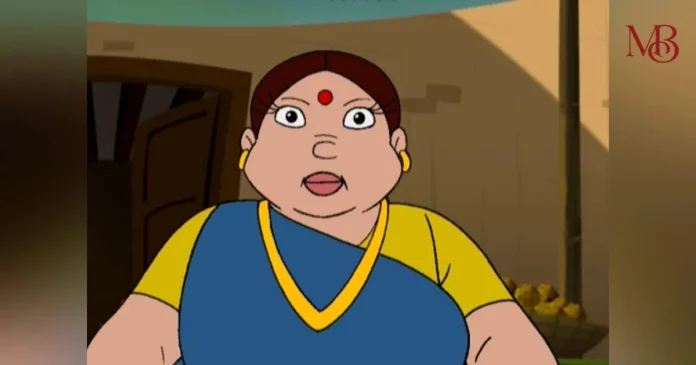Have you ever paused during an episode of Chhota Bheem, perhaps while your child giggles at the antics in Dholakpur, and wondered why the sweet shop owner is named Tuntun? At first glance, she’s just the cheerful ladoo-wali amma whose sweets give Bheem his super strength. But behind that seemingly lighthearted character lies a deeper tribute, one that connects Indian animation to the golden age of Bollywood.

This isn’t just a fun coincidence. It’s a heartfelt nod to one of Hindi cinema’s most beloved and often underappreciated comic actresses: the original Tuntun. Born Uma Devi Khatri, she was a woman of many talents, navigating her way through tragedy, comedy, and timeless music. Let’s dive into the story of how this spirited actress became the soul of a cartoon character and, more importantly, a symbol of strength and sweetness in Indian pop culture.
A Name that Echoes Through Time
In Chhota Bheem, Tuntun runs the famous ladoo shop in the fictional village of Dholakpur. Her son Chutki is Bheem’s close friend, and her ladoos are no less than power-packed energy balls. While the kids laugh at the slapstick moments, few realize that her name is steeped in cinematic history.
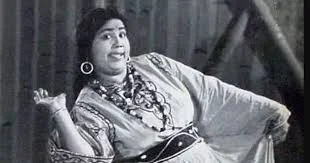
The name Tuntun wasn’t just plucked out of thin air. It’s a deliberate, meaningful tribute to Uma Devi Khatri, the first female comic icon of Bollywood. She ruled the screen in the 1950s and 60s with her unmistakable comic timing, infectious laugh, and unforgettable screen presence.
How often do we remember the pioneers who made us laugh, even when life gave them no reason to smile?
The Journey of Uma Devi Khatri: From Heartbreak to Headliner
Uma Devi’s early life was marked by struggle. Born in 1923, she lost her parents at a young age and faced unimaginable hardships. But even in the bleakest moments, her voice became her companion.
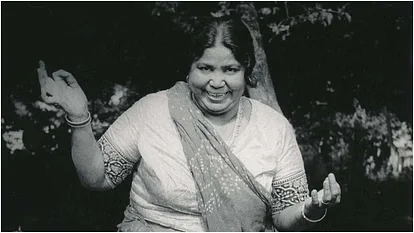
She started her career not in comedy but in music. Yes, before she was Tuntun, she was a playback singer. Her debut song “Afsana Likh Rahi Hoon” (1947) became an instant hit, earning her a place in the industry. She sang for legends like Naushad and became a regular voice on All India Radio.
However, the music world was changing fast. New voices emerged, and opportunities for Uma Devi began to fade. It was then that director-comedian Dilip Kumar encouraged her to explore acting. She hesitated. Could a singer transition into comedy? Would audiences accept her?
They did. And how.
With her unmistakable comic timing and larger-than-life personality, she rebranded herself as Tuntun, the name by which she would become a household name across India.
From Silver Screen to Animation: Why Tuntun Still Matters
You might wonder: what does a Bollywood actress from the 50s have to do with a cartoon in the 2000s?
The answer lies in cultural continuity.
When Green Gold Animations developed Chhota Bheem, they weren’t just creating characters for laughs. They were weaving India’s cultural threads into a new format for a new generation. By naming the sweet-loving mother “Tuntun,” they were keeping alive the spirit of someone who had once filled cinema halls with laughter.
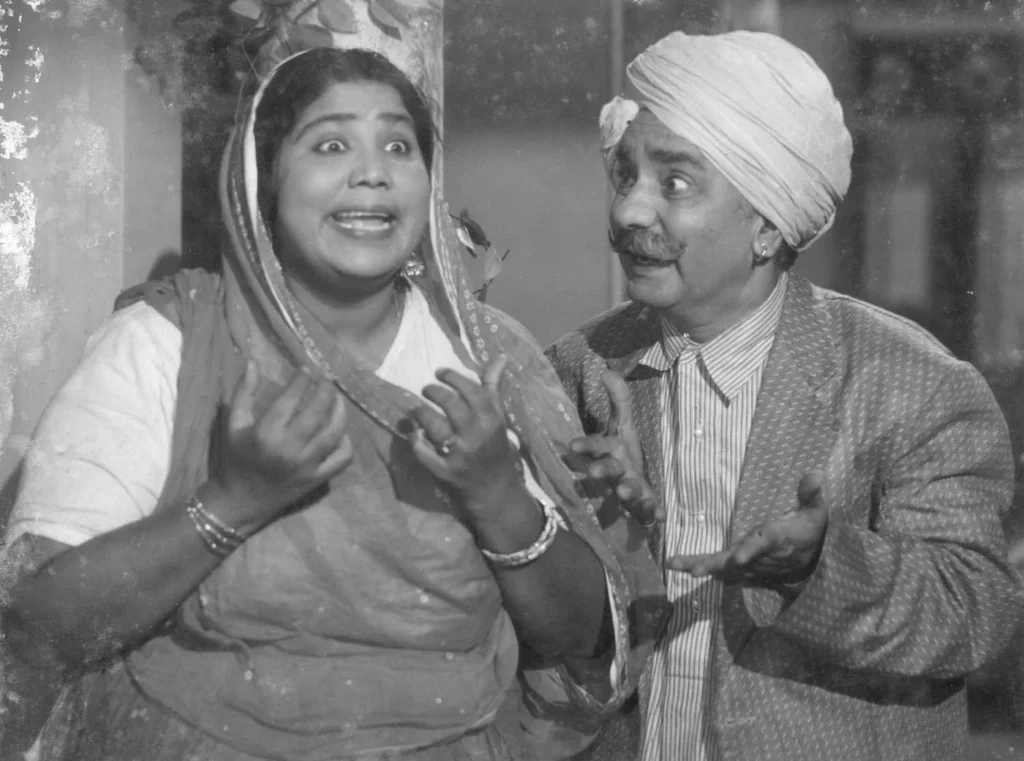
There’s something poetic about it. In her films, Tuntun often played the comic relief characters who made people laugh but rarely got the emotional spotlight. In Chhota Bheem, she may still be the supporting act, but her ladoos are the very source of power, her presence indispensable.
Isn’t that how many women in our own lives are? Unnoticed, underestimated, yet they hold everything together.
Comic Timing, Cultural Binding
In a society where women were expected to stay quiet and small, Tuntun stood out. She was loud, funny, and unapologetically herself. Her presence on screen wasn’t glamorous in the traditional sense, but it was powerful in a way that few appreciated then—and even fewer remember now.
Films like Pyaasa, Mr. & Mrs. ’55, Madhumati, and Kashmir Ki Kali showcased her versatility. Whether it was as a nosy neighbor, a sassy maid, or a matchmaker, she made her mark with little more than a smile and a line or two. Her mere entry on screen made audiences erupt in laughter.
Think about that: in an era dominated by dramatic heroines and stoic heroes, here was a woman who made comedy her crown.
The Power of a Name
In India, names carry meaning, memory, and metaphor. Tuntun isn’t just a character; she’s a cultural bridge.
By including her in Chhota Bheem, the creators introduced a new generation to a legacy they never knew they needed. For the kids, she’s the warm ladoo aunty. For those who look deeper, she’s a reminder that every background character has a backstory, every name a legacy.
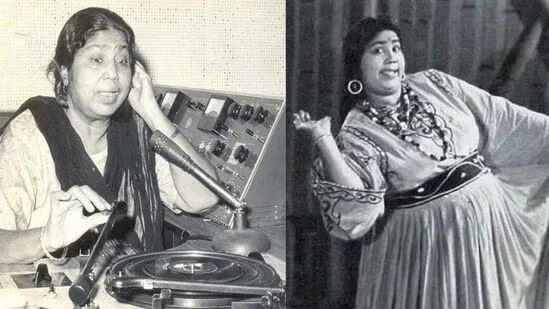
It’s a beautiful irony that a woman who once struggled for screen time now lives eternally in one of the most-watched children’s shows in the country.
Sensory Echoes: Smells of Ladoos and Echoes of Laughter
Close your eyes. Picture Dholakpur. The dusty roads. The sound of temple bells in the background. And the irresistible smell of fresh, warm ladoos wafting from Tuntun’s shop. It’s not just a cartoon village, it’s an emotional landscape.
And in that humble shop stands a woman, strong, loving, and a little funny, whose spirit we recognize from our childhood homes, our mothers, our aunts. Her laugh echoes the real Tuntun’s legacy. Her love, like Uma Devi’s, is quietly revolutionary.
Quick Facts: Who Was the Original Tuntun?
- Real Name: Uma Devi Khatri
- Born: 1923, Uttar Pradesh
- Debut Song: “Afsana Likh Rahi Hoon” (1947)
- Transition to Acting: Encouraged by Dilip Kumar
- Iconic Films: Pyaasa, Madhumati, Mr. & Mrs. ’55, Kashmir Ki Kali
- Died: 2003, Mumbai
- Legacy: First female comic star of Bollywood
More Than Laughter: A Lesson in Cultural Memory
There’s something profound about how memory works in Indian storytelling. We pass down traditions through food, jokes, names, and rituals. In naming a cartoon character after an actress, we’re not just referencing; we’re remembering.
And what better way to honor someone than by keeping their name on the lips of children?
Tuntun’s transformation, from a singer to a comic genius to a cartoon icon, teaches us that legacies are not always linear. They ripple through time, through mediums, through generations.
You might also like: Who is Pookie Baba? Meet the Internet’s Favorite ‘Viral Baba’
A Ladle of Laughter, A Spoon of Strength
So the next time your child watches Bheem zoom off after eating a ladoo, take a moment. Behind that sweet, smiling Tuntun is a real woman who once sang her heart out, made people laugh, and carved space for women in comedy long before it was trendy.
In a country as rich in culture as ours, even a cartoon character can be a tribute, a memory, a lesson.
Because in India, stories never end. They evolve. They echo. They feed us ladoos—and remind us who we are.
FAQs About Tuntun from Chhota Bheem and Bollywood
1. Was Tuntun in Chhota Bheem named after someone real?
Yes, the character is a tribute to Bollywood’s iconic comic actress Uma Devi, also known as Tuntun.
2. Who was Uma Devi aka Tuntun?
She was a playback singer turned actress, known for her comic roles in the golden era of Hindi cinema.
3. Why was she called Tuntun?
After transitioning to acting, she adopted the screen name Tuntun, which became iconic in Bollywood comedy.
4. What made her special in Bollywood?
She was the first female comic icon in an industry dominated by male comedians, breaking barriers with grace and humor.
5. Where can I watch her movies?
Classic platforms like YouTube, Amazon Prime, or Doordarshan’s archives often feature her films.

